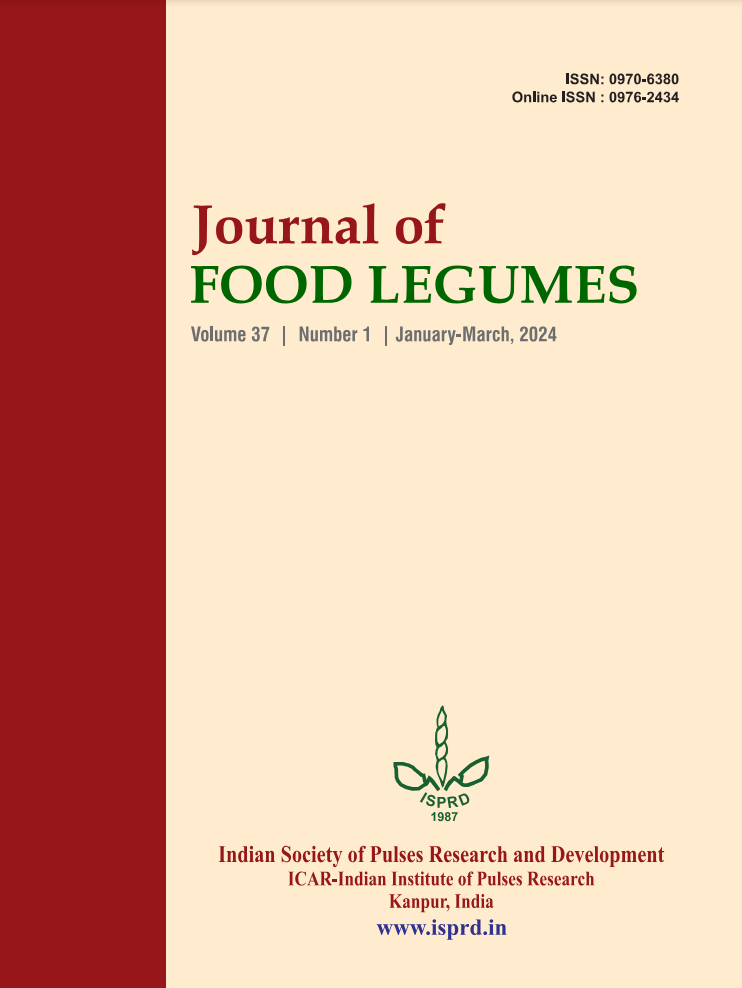Productivity and profitability of chickpea as influenced by varying levels of phosphorus and bio-fertilizers under sub-tropical conditions of Madhya Pradesh
DOI:
https://doi.org/10.59797/jfl.v37.i1.179Keywords:
Biofertilizers, Chickpea, Economics, Phosphorus, YieldAbstract
In the present study, the influence of phosphorus and bio-fertilizers was investigated on the productivity and profitability of summer black gram. The experimental study revealed that among the phosphorus levels, the application of 50 kg P ha-1 recorded significantly the high seed (1108 Kg ha-1) and stover (2616 Kg ha-1) yield. However, among the bio-fertilizers, t h e application of phosphate solubilizing bacteria + Rhizobium resulted in the highest seed (1116 Kg ha-1) and stover yield of chickpea (2655 Kg ha-1). Application of 50 kg ha-1 phosphorus and combined treatment of phosphate solubilizing bacteria + Rhizobium incurred the highest cost of cultivation (₹ 30,421 ha-1), highest gross return (₹ 1,00,015 ha-1), net return (₹ 69,594 ha-1) and benefit-cost ratio (₹ 2.29). It can be concluded that the application of 50 kg ha-1 phosphorus and treatment of phosphate solubilizing bacteria+ Rhizobium in chickpea cultivation may be profitable.






